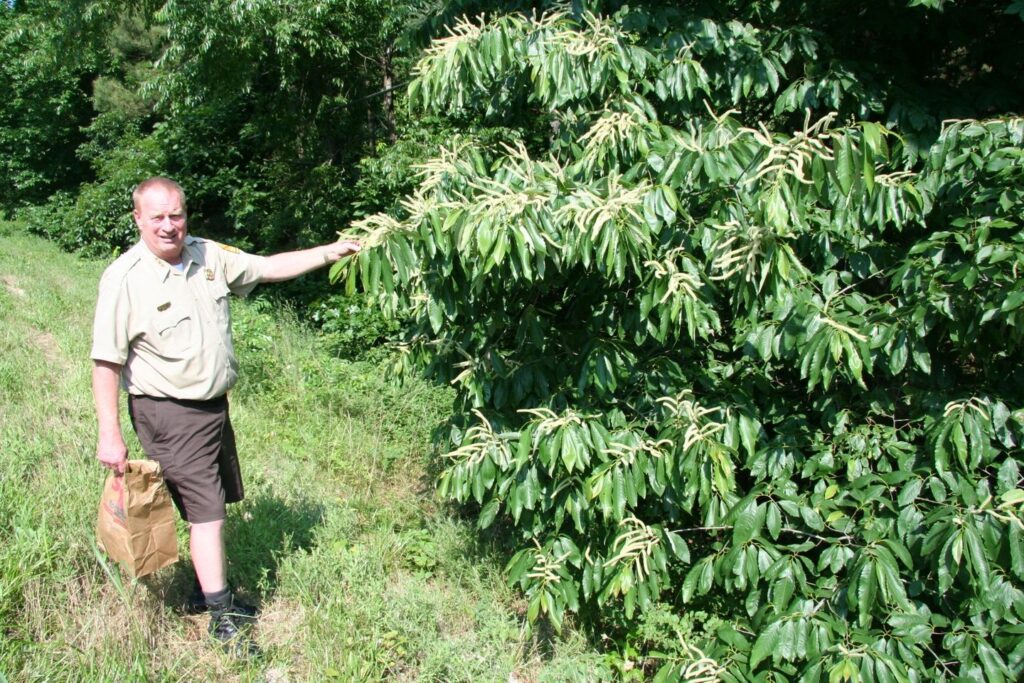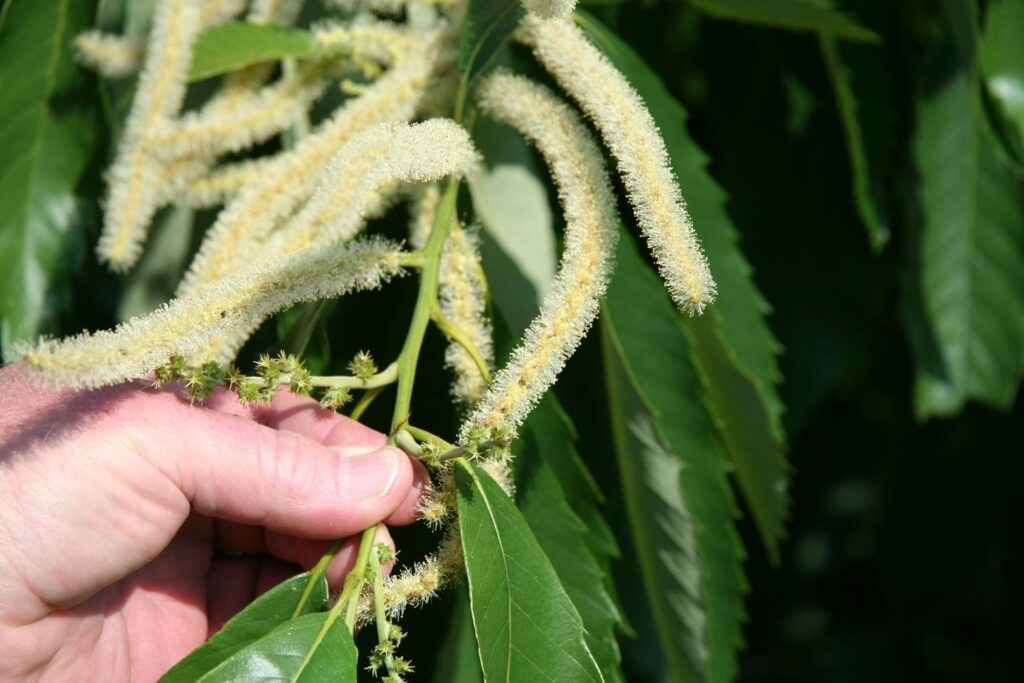
The Ozark Chinkapin (Castanea ozarkensis) (taxonomy is in some dispute as to whether the typical Ozark form should be considered a species, or a variety–I tend to favor considering it a species) is a cousin of the American chestnut. Like chestnut it has been massively impacted by the chestnut blight. It survives today only as sprouts from old roots. Sometimes those sprouts can become quite large, but inevitably they contract the blight and die back to the roots.
There does seem to be variation in resistance to the blight however. And the American Chestnut Foundation is doing great work in developing blight-resistant forms of American chestnut. The Ozark Chinquapin Foundation is working to develop blight-resistant forms of the chinkapin and restore them to forests of the Ozarks and Ouachitas.
Chinkapin are blooming now and they are asking for help in locating possible blight-resistant clones, so I am passing on their request.
The Ozark Chinquapin Foundation (OCF) is a volunteer driven, 501C3 non-profit organization dedicated to restoring the Ozark chinquapin to the woodlands and forests of the south-central United States as a mature, seed producing tree species.We are working to establish a viable seed base through research and manual cross-pollination of surviving trees to develop a 100% pure Ozark chinquapin that can reproduce and thrive in our forests. Our recovery action plan involves :
Locating surviving blight resistant trees
Preserving genetics through cross-pollination and trans-locating seed within native range to ensure genetic diversity
Utilizing science in genetics and hypo virulence
Raising public awareness through education and promote OC restoration through local and state cooperators
OCF members volunteering hundreds of hours in field work and research
Establishment of a tree database and several test farms
Making seed available to the public for reintroduction
You will notice that the very first thing we must do in the action plan is to locate surviving blight resistant trees. It is very important that we find Ozark chinquapins with the best genetics, so that we might obtain and plant seed in the test plots that have been established and will be established. There are test plots in Missouri, and we established one at Hobbs State Park in 2014. Lake Dardanelle State Park just planted 10 Ozark chinquapins earlier this year, and I know that Cossatot and other Arkansas State Parks are already on board with saving the Ozark chinquapin.My request is simply this: The Ozark chinquapin trees are in bloom right now. Hike your trails and see what’s blooming. If you come across seed producing Ozark chinquapins, please let me know. If possible, plan to collect and share some seed this fall. Photos and GPS coordinates are always a plus. Thank you for your help! Steve Chyrchel, Hobbs State Park

